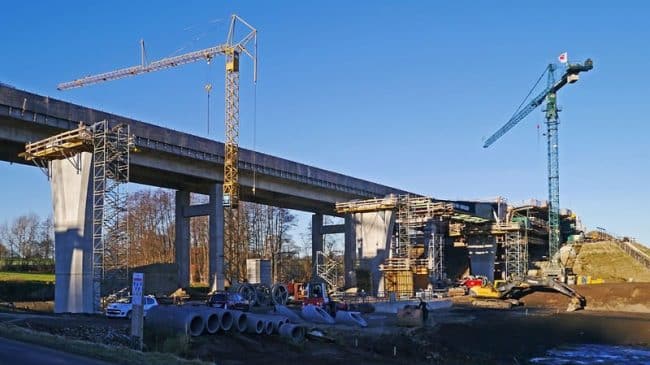On July 31st, Congress passed a highway funding bill by a wide margin. Assuming that President Obama signs it, as is expected, the bill will extend nearly $11 billion of General Fund revenue to the flagging Highway Trust Fund (HTF) through May 31st. It proposes to pay for these expenses over the next decade through customs duties, deferred corporate pension contributions and a $1 billion transfer from the Leaking Underground Storage Tank (LUST) fund.
While this bill averts mandatory reductions in HTF grants to states, few in Congress pretend that it’s anything but a stopgap. The pension “smoothing” that would procure the majority of the funding amounts to little more than a euphemism for deficit spending. If nothing else, the shallowness of Congress’s bill illustrates why relying on motor fuel taxes for funding the national transportation is futile.
So what implications does the fuel tax’s obsolescence hold for future federal policy? The easy answer, of course, is that Congress needs to find a new dedicated stream of revenue. However, the devil lies in the details; current proposals all have problems of their own.
Some, such as Eno’s Joshua Schank, have suggested that Congress should discard the trust fund model entirely and, instead, employ General Funds in the form of discretionary grants. In contrast to the current system where federal fuel tax revenues-18.4 cents/gallon for gasoline and 24.4 cents/gallon for diesel-are dedicated to surface transportation projects, this proposal would draw funding from all federal taxes. In practice, however, this would represent the logical progression of Congress’s current practices. Since 2008, the HTF has received an influx of $54 billion in General Funds.
Proponents argue that a General Fund solution is preferable going forward both because it would be modally agnostic and not dependent on specific tax increases. However, it is anything but clear that a more flexible funding system is a good thing. Consolidating the trusts for different modes of transportation would afford politicians greater discretion in funneling money to pet projects. Furthermore, unmooring federal highway assistance programs from fuel tax constraints would exacerbate deficit spending with no incentives to allocate scarce funds efficiently.
Another solution favored by Congressional Democrats such as Oregon Representative, Peter DeFazio, is replacing the gas tax with a per-barrel oil tax. It would set the initial rate at $6.75 per-barrel but would automatically increase each year to outpace inflation and advances in fuel economy.
While this proposal taps into a populist disdain for “Big Oil” shared by many Americans and would replace regressive fuel taxes, it would allow oil companies to pass on costs to consumers. To this end, it would disproportionately punish low income and rural drivers who often drive older less fuel efficient cars. In addition, it is not clear how this tax would generate more revenue in the short-term than fuel taxes. A $6.75 tax on a 42-gallon barrel translates to just over 16 cents/gallon or 2.4 cents less than the current rate for gasoline. And the tax would only be levied on oil designated for highway uses, excluding aviation and electricity and heating applications. Most importantly, however, the automatic rate increases would not track changes in infrastructure maintenance costs and could eventually overcharge taxpayers. Because the Interstate system, for instance, is nearing the end of its intended 50-year life cycle, improvement costs stand to level off after they are rebuilt.
Though there is no magic solution to resolving immediate budgetary shortfalls, President Obama’s recent proposal represents a major step in the right direction.
The “Build America Investment Initiative” would give states greater authority over the portions of the Interstate they own and operate. It would allow them more freedom to finance ongoing maintenance costs via tolling. It would also establish an “investment center” as part of the US Department of Transportation (USDOT) that would coordinate partnerships between government agencies, private developers and investment banks.
Tolling epitomizes the “user benefits user pays” principle that the fuel tax purported to embody. Essentially, this means that those individuals, and only those individuals, who directly incur costs have to pay them. This simultaneously promotes equity and harnesses market signals. When a toll road generates a greater than expected amount of revenue, it communicates to private investors, state DOTs and federal agencies that it warrants further investment. In other words, it tells officials which roads consumers demand the most and how much they demand them. This function is especially useful for calculating effects of demographic shifts on road use.
From a technological perspective, electronic tolling operators can use the information from these market signals to implement congestion-based pricing for express lanes. This allows them to manage demand for scarce road space, decrease congestion and speed up traffic.
To supplement tolling at the state level, Congress should consider allocating more money to the loan program established by the “Transportation Infrastructure Finance and Innovation Act” (TIFIA). TIFIA loans have proven successful at leveraging limited public dollars. Unlike traditional grants, TIFIA loans are capped at 33% of a project’s total funding and account for credit risk, encouraging more thorough cost-benefit analyses of federal investments.
Though no one solution is perfect, a mixture of federalist devolution, toll concessions and targeted federal loans represents the best answer to our immediate transportation needs. In the long-term, policymakers will need to implement a regional system of mileage-based user fees (MBUFs) that charge vehicles for their use of roads and not for their consumption of fuel. Yet even as short-term solutions go, merging highway spending into the General Fund, imposing a hidden consumption tax on consumers or, worst of all, remaining in the limbo of stopgap half-measures will do little to solve the problem.
